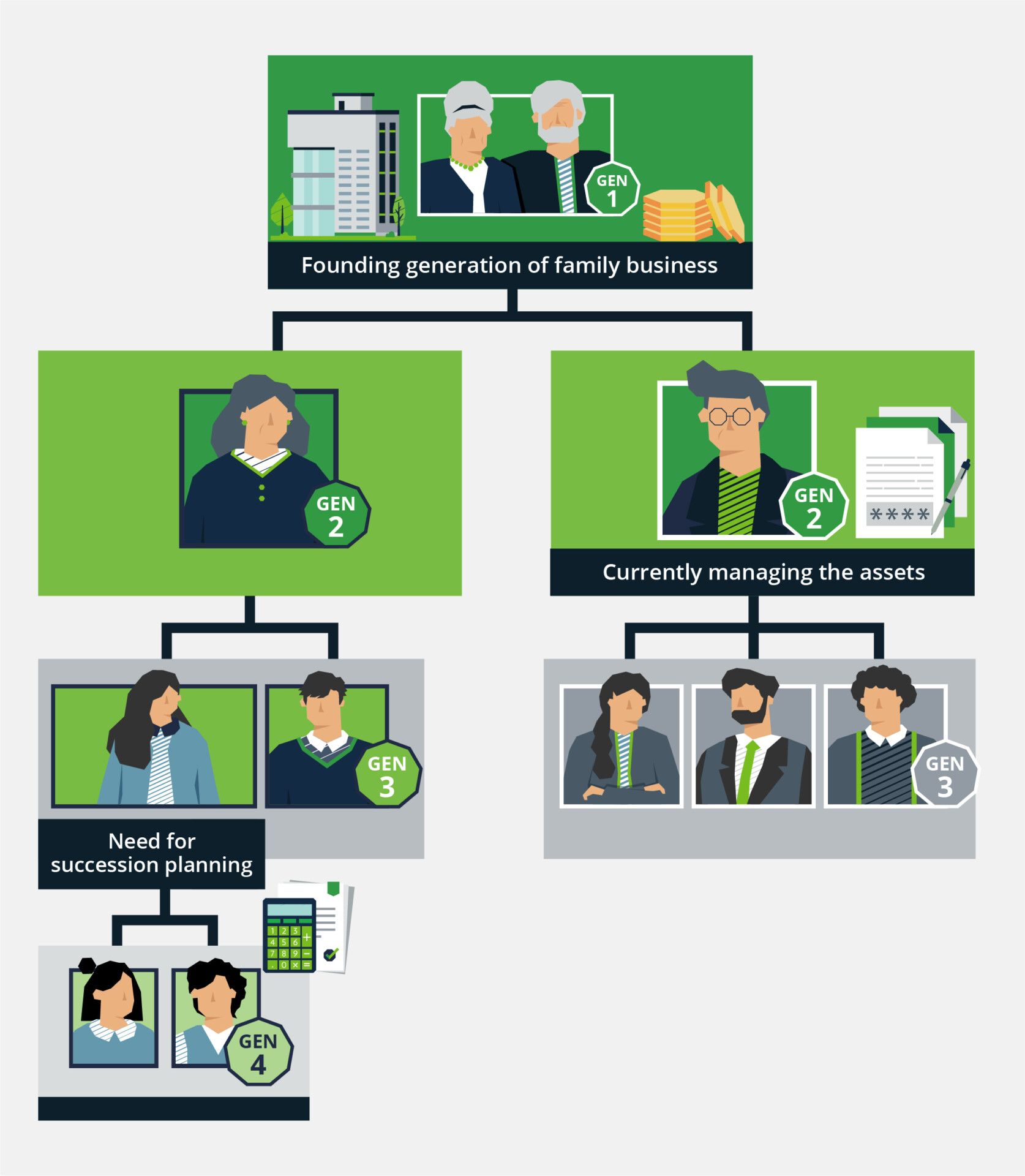Blog
What to Do When a Trustee Relationship Goes Wrong
Trustee relationships can be complicated. Trustees not only manage assets, but they also must ensure that beneficiaries' needs are met. Learn what to do when there is a breakdown in the trustee-beneficiary relationship and how to resolve it amicably.

The Scenario
The first generation of the family (Gen 1) founded a successful real estate company, and they had a son and a daughter (Gen 2) who inherited the business when their parents passed away. The daughter went on to have two children, a son and a daughter (Gen 3), but she later perished in an accident, leaving them orphaned. The second-generation son had three children and, after losing his sister, he became the trustee of his niece and nephew’s assets. Today, he is in his 70s and runs the family business.
The niece, nephew, and children (Gen 3) of the business owner are in their late-30s to mid-40s. None participate in the family business.
The nephew is single and runs his own growing business. His sister is a stay-at-home mom to two minor children. They both worked, but when their children were born (Gen 4), the trust provided financial flexibility, allowing the mom to stay at home to care for their children. Both the brother and sister say their uncle is kind and loving, and they agree he has done a good job as trustee. Until now.
Frustrations Arise
The siblings’ distribution needs have been few until recently. The brother has requested distributions to continue to build his business. His sister has requested distributions for her children's medical, educational, and recreational expenses. Both siblings’ distribution requests fall within the trust guidelines. However, the uncle appears more understanding of the desire to use trust assets to build a business than for living expenses. This causes frustration for the siblings.
Their uncle, the trustee, has not been providing financial reporting and has not given equal consideration to distribution requests. Meanwhile, the siblings don’t understand the value, location, and ownership structure of the real estate assets, nor do they know who the trust advisors are, including the CPA and investment professional. The sister is in the process of her own family’s estate planning but when both she and her brother ask their uncle for information, he gives vague responses, leading the siblings to believe their uncle is worried about giving up control.
Trustee Responsibilities
The trustee has fiduciary duties owed to the beneficiaries. The primary fiduciary duties are:
- Duty of good faith and loyalty
- Duty of care/due diligence
- Duty of obedience
The trustee must abide by these duties and take actions or the trust could be at risk.
Duty of good faith and loyalty means the uncle must act in the best interest of the beneficiaries and treat both equally. Specifically, the trustee must treat each beneficiary in good faith, respond to reasonable requests, and be impartial. In this situation, the trustee should be making distribution decisions based on the trust document and not on his own perception of whether the need is worthy.
Duty of care refers to management of the assets. In this scenario, the trust may or may not be at risk. It is plausible that the trustee has exhibited excellent duty of care but has failed to inform the beneficiaries about how the trust is being managed.
Duty of obedience refers to abiding by the terms of the trust and reporting and accounting for trust activities to the beneficiaries. The beneficiaries in this case have never asked for any accounting of the properties or performance of the investments, nor have they been provided to them. This is problematic because the trustee is obligated to provide this reporting. It also makes it impossible for the trustee’s niece to implement estate planning strategies for her family.
How to Resolve a Contentious Trustee Relationship Amicably
Although this situation may be frustrating and emotional for all parties involved, the following strategies can help the family resolve them in a non-litigious way.
- Initiate an open discussion with their uncle explaining what information they would like to have and how they can improve communication in the future. If the situation is fraught with emotion on either side, they should engage a family dynamics specialist to help.
- Learn who is on the trust's advisory team and set up a meeting. They can ask them to provide information about the portfolio’s performance, their parents’ original intent for the trust, and the implications of the existing structure.
- Enlist a property and casualty risk advisor to ensure the assets are protected. The trustee’s personal assets could be at risk as well, so the uncle needs to take steps to protect his own interests.
Once the current situation is resolved the next step is to focus on succession planning while the uncle is still healthy. All members of Gen 3—both the siblings and their cousins—need to:
- Understand the assets in the trust
- Understand the ownership structure
- Discuss their goals and objectives moving forward
Estate planning professionals can help the family better understand the portfolio and can guide the family through their discussions and the implications of their decisions. They can also help the family create a mission statement as well as wealth transfer strategies that fit each family member’s vision.
Open Communication Can Help Prevent Trustee Problems
Although we’ve focused on the specifics of one case study, any family can find themselves in a similar situation. The assets and family relationships may be different, but the overarching message is the same: Trustees should understand their roles, responsibilities, and liabilities, while beneficiaries should be educated about the family mission and vision, what the trust documents do and don’t allow for, and the process for making the proper decisions. Open communication between the trustee and beneficiaries can solve—and even prevent—their relationship from breaking down, while outside advisors can help manage their risk factors.
To learn more about trustee responsibilities and liabilities, reach out to your Woodruff Sawyer account team.
Author
Table of Contents








